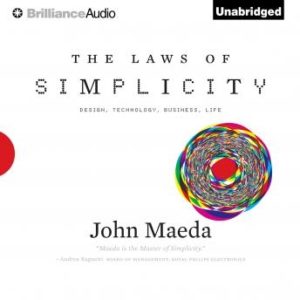The Laws of Simplicity, Audiobook (Free)
- Nick Podehl
- 2 h 44 min
- Brilliance Audio
- 2012-02-22
Summary:
Finally, we are learning that simplicity equals sanity. We’re rebelling against technology that’s as well complicated, Dvd movie players with way too many menus, and software accompanied by 75-megabyte “read me” guides. The iPod’s clean gadgetry provides made simpleness hip. But occasionally we find ourselves caught up in the simplicity paradox: we want something that’s simple and easy to make use of, but also will all the complex things we would ever want it to accomplish. In The Laws and regulations of Simpleness, John Maeda presents ten laws for about The Laws and regulations of Simplicity, balancing simpleness and complexity running a business, technology, and design – guidelines for needing less and actually getting more.
Maeda – a professor in MIT’s Media Laboratory and a world-renowned image developer – explores the question of how exactly we can redefine the idea of “improved” so that it doesn’t always mean something more, something added on.
Maeda’s first regulation of simpleness is reduce. It isn’t necessarily beneficial to include technology features just because we can. As well as the features that people do have must be organized (Regulation 2) within a sensible hierarchy so users aren’t distracted by features and functions they don’t need. But simplicity is not less simply for the sake of less. Skip forward to Legislation 9: “failing: Some issues can never be produced basic.” Maeda’s concise information to simplicity in the digital age group shows us how this idea can be a cornerstone of institutions and their items – how it could travel both business and technology. We can learn to simplify without sacrificing convenience and meaning, and we are able to achieve the total amount described in Rules 10. This regulation, which Maeda calls “the main one,” tells us: “Simpleness is about subtracting the most obvious, and adding the meaningful.”
Related audiobooks:







